Huawei Mate 40 phones launch despite chip freeze
- Published
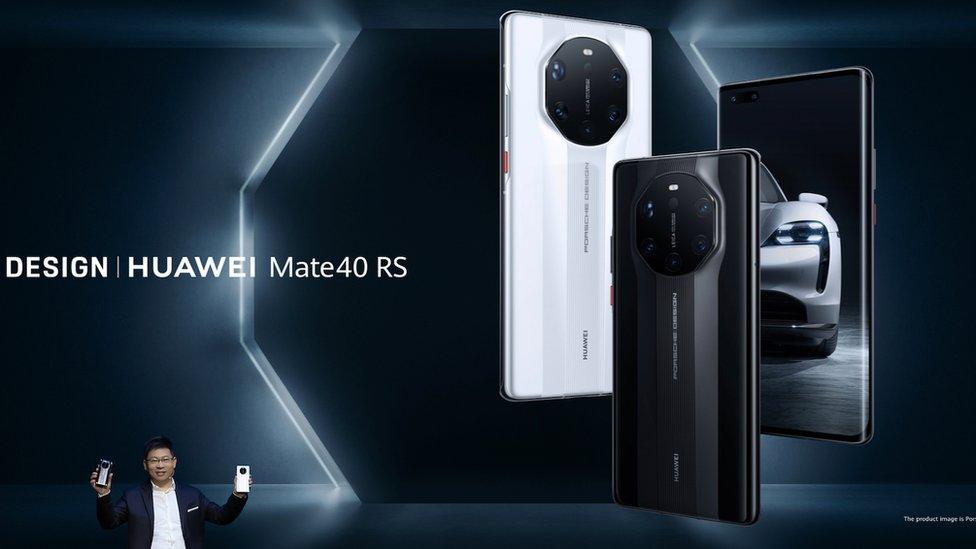
The top-end version of the Mate 40 includes a temperature sensor
Huawei has unveiled its Mate 40 smartphones claiming they feature a more "sophisticated" processor than Apple's forthcoming iPhones.
The component was made using the same "five nanometre" process as its US rival's chip, but contains billions more transistors.
As a result, the Chinese firm claims its phones are more powerful.
However, Huawei has had its supply of the chips cut off because of a US trade ban that came into effect in September.
That means that once its stockpile of the new Kirin 9000 processors runs out, it faces being unable to make more of the Mate 40 handsets in their current form.
At present, only Taiwan's TSMC and South Korea's Samsung have the expertise and equipment to manufacture 5nm chips, and both are forbidden to supply Huawei with them or any other semiconductor product, external whose creation involves "US technology and software".
The States says the move has been taken on national security grounds, but Huawei denies posing a threat.
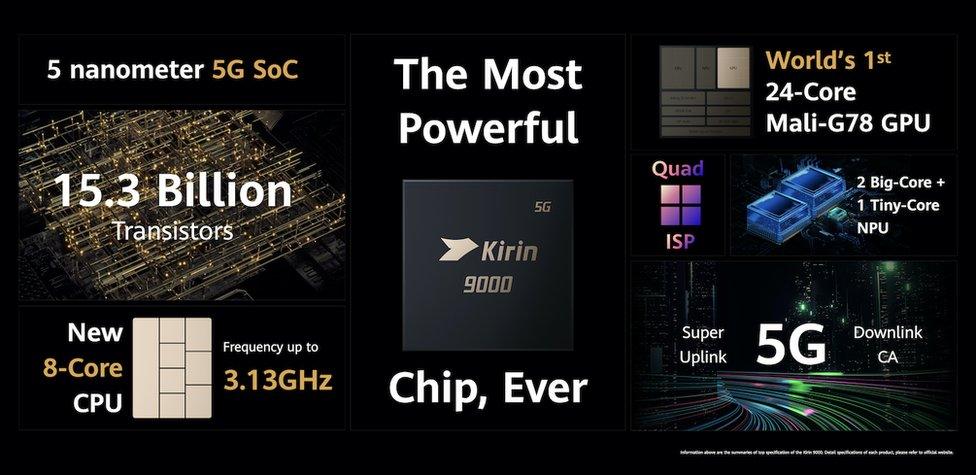
Huawei says its Kirin 9000 chip has 30% more transistors than Apple's A14 processor
The BBC asked how many of the chips Huawei had purchased, but it declined to answer.
However, in a online presentation, the company's consumer devices chief Richard Yu acknowledged the ban was "making the situation extremely difficult for us".
Huawei also faces other earlier restrictions placed on it by Washington, which have prevented any of the devices it has launched since mid-2019 from providing access to some of Google's services, including its Play Store.
Despite this, Huawei remains the world's third-bestselling smartphone-maker, and the market leader in its home country.

"In China, Huawei has phenomenal brand awareness in the premium space," commented Mo Jia, an analyst at tech research firm Canalys.
"Demand for the Mate 40 series is expected to be strong [there], but despite this, amid US sanctions, component constraints may limit the total quantity of new Kirin-powered smartphones Huawei can produce."
Smooth screens
The basic Mate 40 model - which Huawei said costs €899 ($1,049; £800) - has a 6.5in (16.5cm) OLED display. Three more expensive versions - ranging in price up to €2,295 - have 6.8in OLED screens.
In each case, the screens offer a 90Hz refresh rate - meaning the equivalent of 90 frames per second - which is higher than Apple's newest iPhones but less than Samsung's S20 series.
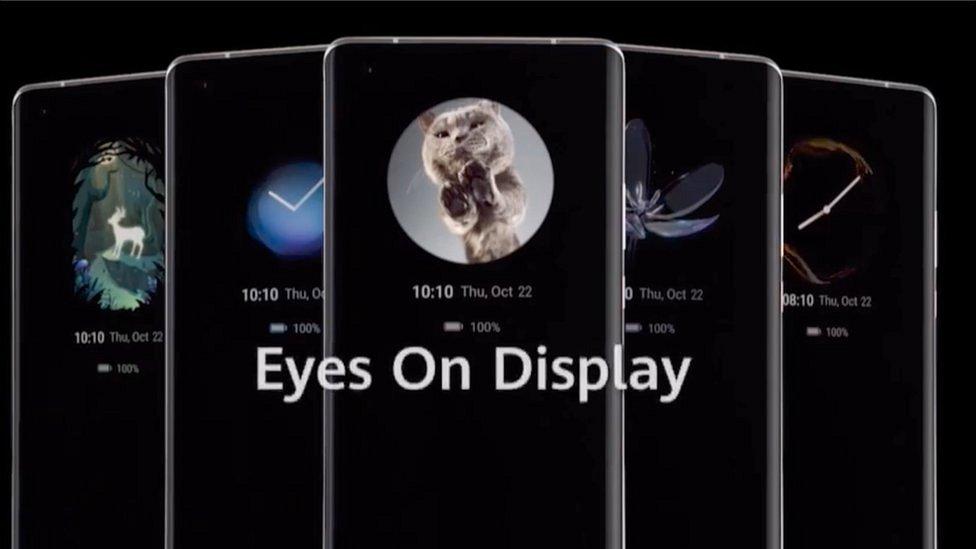
The phones detect when users are looking at them
Mr Yu suggested this offered the best balance of smoothness and battery life.
One of the main ways the different models are differentiated are by their cameras:
the basic Mate 40 has a single selfie camera and three rear cameras (wide-angle, ultra-wide angle and telephoto)
the Mate 40 Pro adds a 3D face-unlock sensor, and improves the specifications of the rear ultra-wide and telephoto cameras
the Mate 40 Pro+ adds a fourth rear "super-zoom" camera and a fifth depth-sensing camera for improved shallow-focus shots
the Porsche Design Mate 40 RS introduces an infrared thermometer, allowing the device to check the local temperature
For the time being, the firm only plans to put the Pro model on sale outside China, where it will cost £1,100.
One of the innovations detailed was the use of a "free-form lens" for the ultra-wide angle camera found on each model, which Huawei said solved image distortion problems.
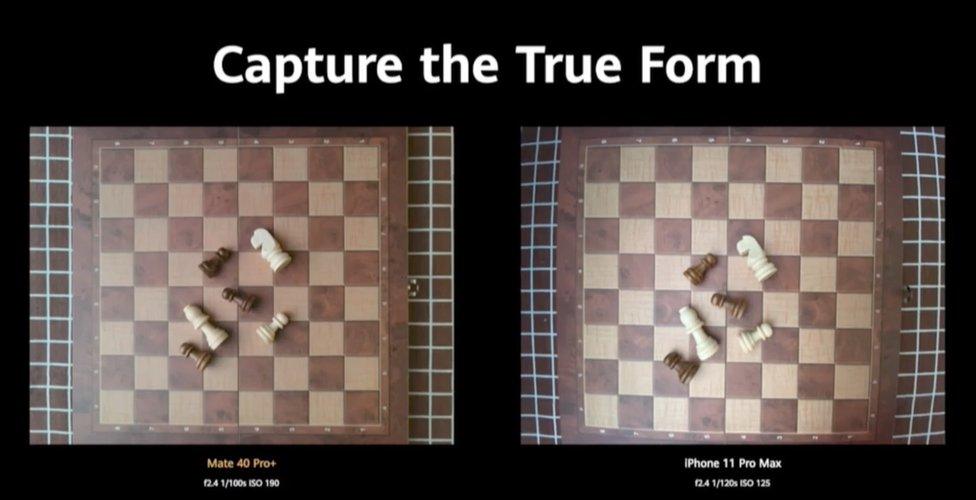
Huawei claims its use of a new type of smartphone camera lens reduces distortion in ultra-wide shots
The firm added that an optional "eyes-on-device" feature - which only turns on the screen when it detects being looked at - would reduce the power the handset consumes.
Absent apps
Huawei said the Kirin 9000 chip includes an integrated 5G modem, which enables it to extend battery life beyond its rivals.
One slide displayed at the launch claimed the Mate 40 Pro would last about 25% longer on a single charge than Samsung's Note 20 Ultra+, despite the latter having a bigger battery.
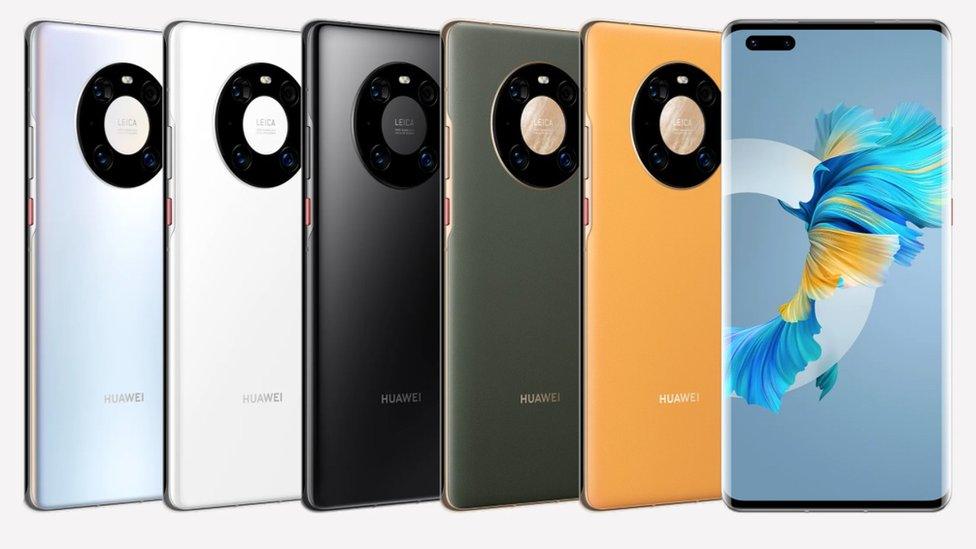
For now, Huawei has only confirmed that the Mate 40 Pro model will be sold outside of China
Huawei said it was also using the extra processing power to take slow-motion shots at 240 frames per second from two of the cameras simultaneously.
The firm also boasted that the chip allows its devices to offer a "pro-gaming" experience, thanks to its ability to offer graphics with better detail and lighting effects.
However, some titles including Call of Duty Mobile will not work on the devices because of their lack of access to some of Google's technologies, while some others function but are unable to make in-app payments.
Most Android apps can be installed via the Petal search tool even if they do not appear in Huawei's own app store.
However, there are notable exceptions.
Many banking apps, eBay and the UK's Tesco Groceries app will not install, and instead the user is provided with an icon that instead launches their websites. The Sky News app is also unavailable, although Huawei said it was coming soon.

Huawei Petal Search allows users to find compatible apps that are not listed on the firm's own app store
"Clearly politics has brought about a situation where Huawei is now working hard to become non-reliant upon Google to offer consumers an alternative," a spokesman told the BBC.
"Surely what Huawei is doing with its App Gallery - albeit a work in progress - deserves praise."
If an app is unavailable, users can add it to a "wish list" and Huawei says the developer will be told if there is strong demand.
But one expert questioned whether most consumers would be happy with the current arrangement.
"The new chip is impressive and the circular camera design on the rear distinctive, but despite Huawei's best efforts to build up its App Gallery, there are still significant gaps," commented Ben Wood from CCS Insight.
"Even with the Petal search capability, you still have this challenge that you have to find the applications and then side-load them onto the device. That's all very well for tech-savvy, committed Huawei enthusiasts, but for the mass market, it's a pretty big barrier to put in people's way."
- Published23 October 2020

- Published22 October 2020
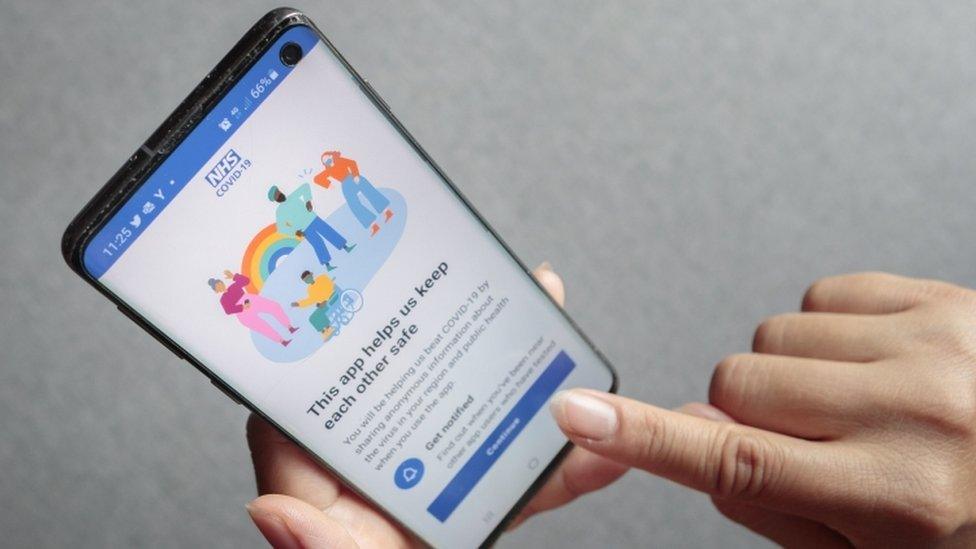
- Published13 October 2020
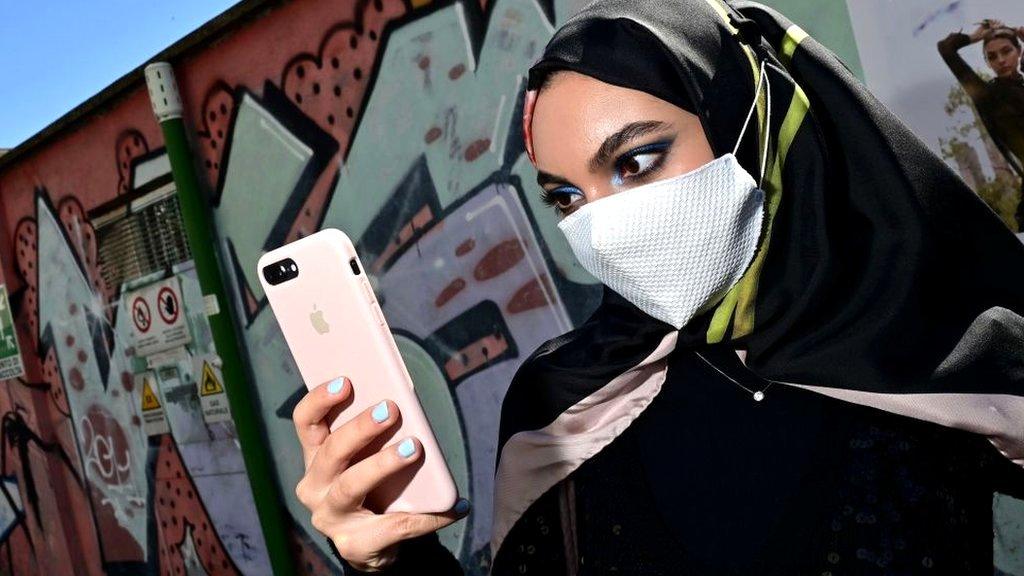
- Published8 October 2020